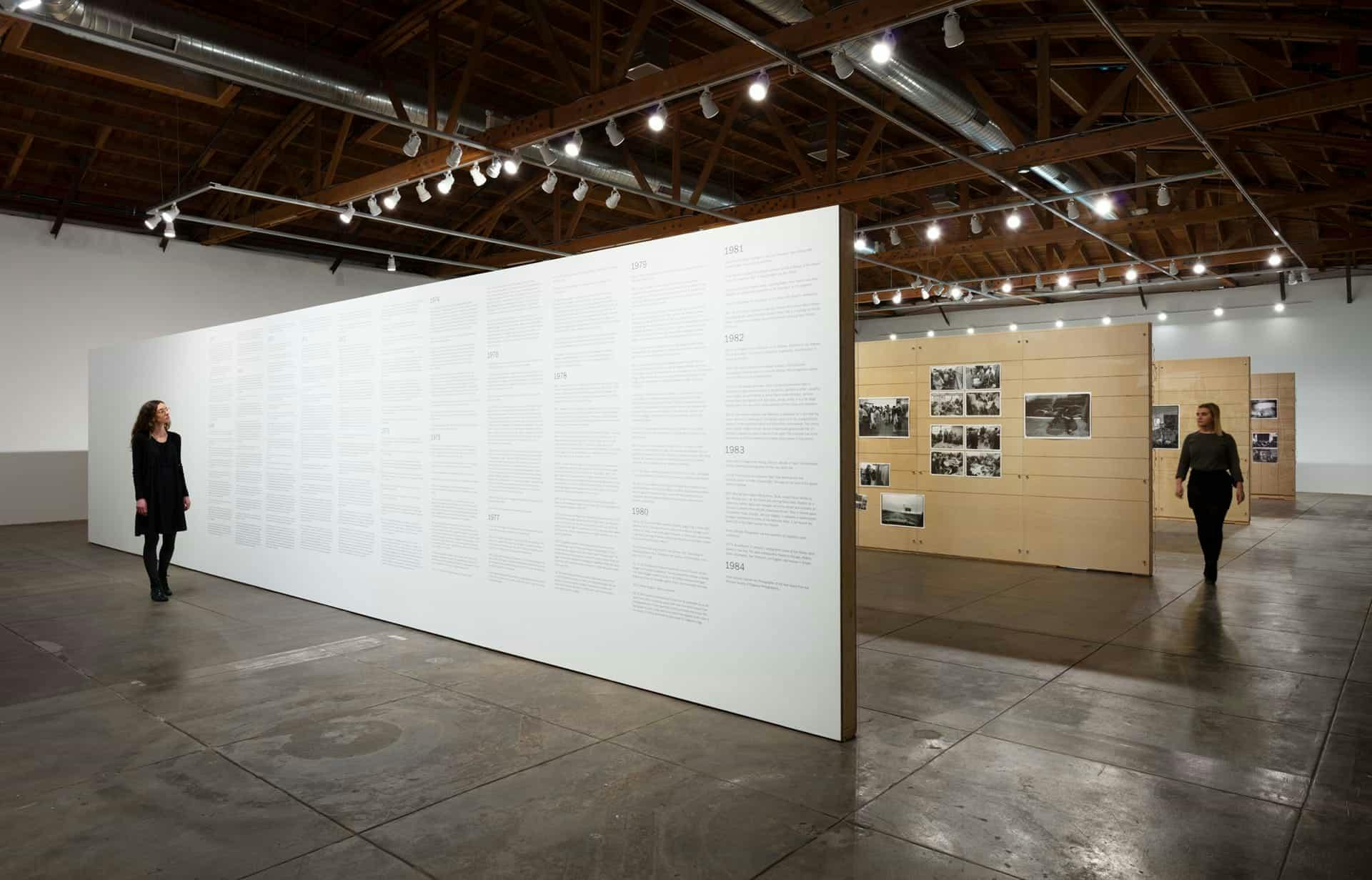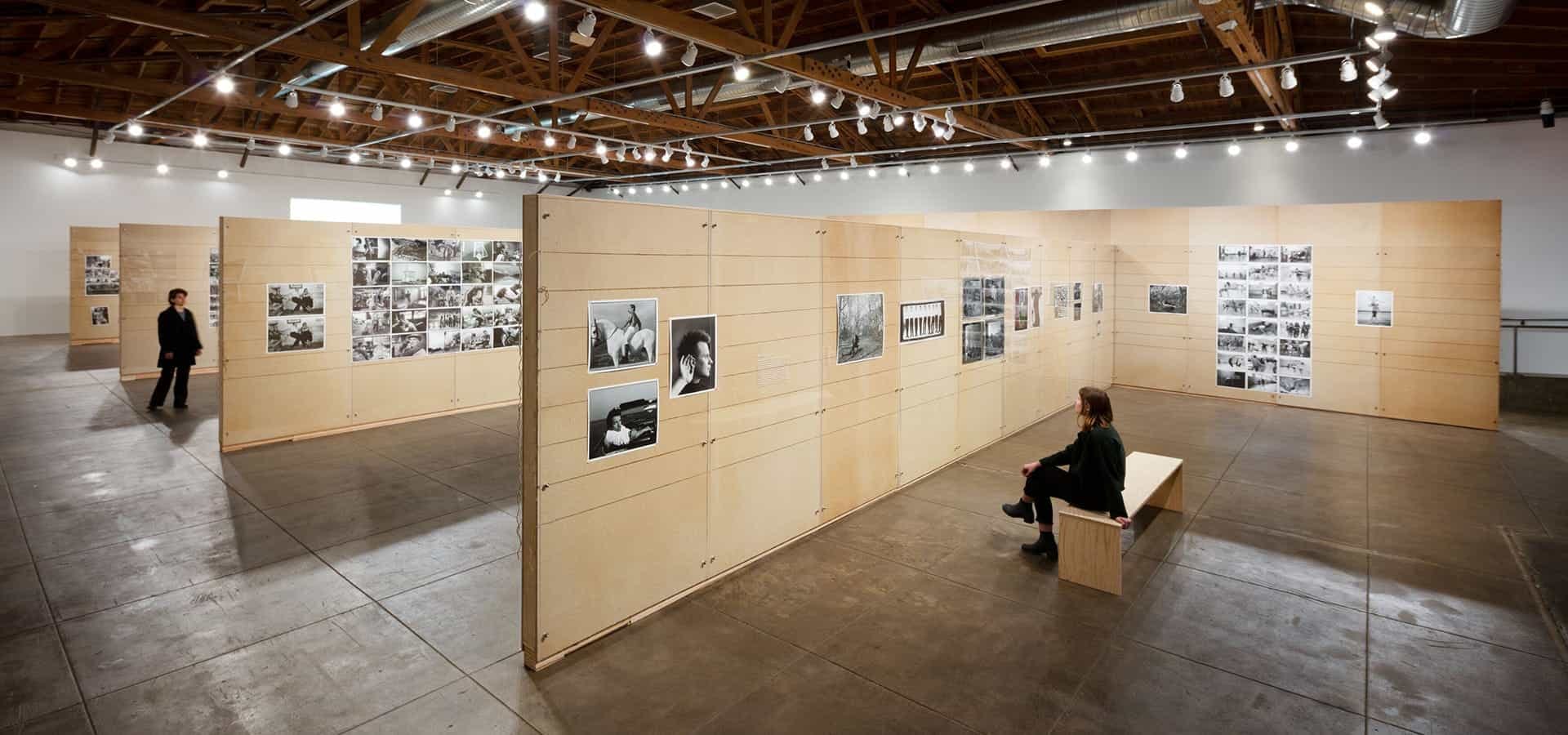After two of her images were published, she switched majors from painting to photography, and embarked on what would develop into a symbiotic relationship between the young photographer and a magazine that became famous for reflecting the American zeitgeist.
Moments of freedom and an unyielding imagination fed the evolution of Leibovitz’s career. The exhibition highlights the courageous choices that enabled her artistic growth and future successes. The monumental display of works taken during Leibovitz’s notorious 13-year tenure at Rolling Stone blurred the lines between celebrity and civilian, interviewer and interviewee, artist and subject, dissolving the boundary separating Leibovitz from those captured in her photographs. Documenting fellow reporters and photographers in addition to their subjects, Leibovitz highlighted those hidden behind the camera and brought them to the forefront.

The Early Years includes reportage of major political moments of the ’70s in the United States, such as the 1972 presidential campaign, which she covered with the writer Hunter S. Thompson. In another poignant photograph from the resignation of Richard Nixon on August 9, 1974, Leibovitz’s camera records his helicopter as it takes off from the White House lawn. Leibovitz’s immersion within the political landscape is further demonstrated through a series of photographs from the 1976 election, when figures such as Jerry Brown and Jimmy Carter seized national attention. Images from the Democratic National Convention in New York City showcase candid moments between Dianne Feinstein, and journalists such as Sally Quinn and Dan Rather. Leibovitz’s unobtrusive lens implicates both the photographer and her peers as significant actors and contributors to particular cultural moments.

Similarly, when traveling with the Rolling Stones to document their tour of the Americas in the summer of 1975, Leibovitz entered the band’s world to such a degree that only her camera served as a reminder of her identity. In one such image on view in the exhibition, a cadre of frenzied fans storm a chain link fence outside a stadium in Cleveland, where the Rolling Stones were performing. It was Leibovitz’s distinct ability to immerse herself in varying environments that enabled a direct engagement with her subjects, revealing their true, honest, and perhaps most vulnerable selves.
The Early Years concludes with photographs Leibovitz took in the late 1970s and early 1980s. The images reflect a signature technique Leibovitz developed early in her career, as she consciously and consistently fit style to subject. This was achieved through collaborating with her subjects, photographing them in their homes where friends, lovers, children, and other personal markers might appear. During the latter part of this period Leibovitz began using a medium-format camera that produced square photographs. The camera was appropriate for shooting set-up portraits with a strobe light. Leibovitz staged planned portraits based on a straightforward idea often stemming from a deeply personal collaboration with her subjects. Evidencing a level of uncanny intimacy and uncommon depth of engagement, this relationship can be seen in one of her most celebrated photographs on view, in which a naked John Lennon clutches Yoko Ono. The portrait, made on December 8, 1980, was meant to serve as an intimate emblem of the couple’s relationship. When Lennon was killed just hours after the photo was taken, the image became a powerful visual memorial.

Annie Leibovitz’s prolific output during this period, and her inventive approach to photography itself, position her distinctly within the traditions and trajectory of American portraiture during the twentieth century. Her unique photographic language dovetailed with–and advanced–the medium’s evolution as a force for art making. The singularity of her vision, which included combining portraiture with photojournalism that captured historical and cultural touchstones throughout the United States and abroad, places Leibovitz within a lineage of some of her personal heroes–artists like Andy Warhol and Richard Avedon, both innovators of their mediums. Idols like Robert Frank and Henri Cartier-Bresson inspired Leibovitz to turn the tide on photography’s reception. Combining Frank’s highly personal and emotional style of photographic reportage with Cartier-Bresson’s Surrealist and even sculptural art photography, Leibovitz embraced her own inclination toward personal journalism.
Annie Leibovitz. The Early Years, 1970 – 1983: Archive Project No. 1 will be on view at Hauser & Wirth Los Angeles daily from Tuesday – Sunday, 11 a.m. to 6 p.m. from February 14 through April 14 2019. For more, visit hauserwirth.com










